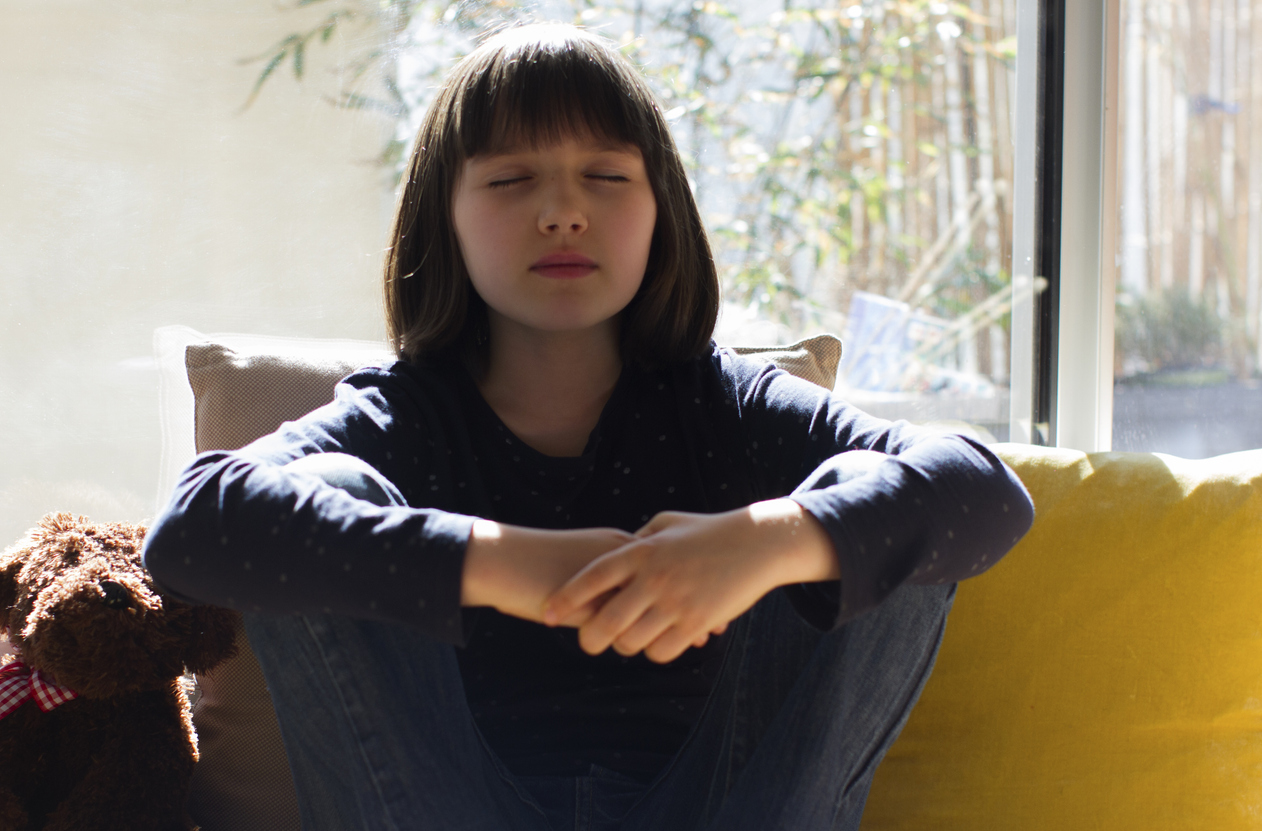Looking at Progressive Education: How to Decide if It Is a Good Fit

Considering a Progressive Education
Parents exploring independent schools for their children these days will hear a lot of the language of progressive pedagogy, some from progressive schools, and some from traditional schools who may be putting their toes in the water. Experiential learning, project-based learning, maker spaces, student-centered teaching, integrated curriculum—these are all references to progressive teaching and learning, although not evidence of its actual use.
As a general rule, schools become less progressive as they go up in age range. There are many progressive elementary schools. When “junior high” transitioned into middle school in the late 1960s and early 1970s, middle school programs tended to be more progressive in practice than those they replaced. Many progressive high schools were started in the 1930s, but relatively few of them managed to resist a shift towards the traditional during the 1950s. Later many were pulled into the conformity required by the college admissions process and the AP system. Today there are quite a few young progressive schools, and an even larger number of traditional schools that are adopting some pieces of progressive culture and pedagogy.
Progressive schools suffer from some common misconceptions. One is that progressive means permissive. There are some progressive schools that expect very little of children, but these are not the norm. In general, progressive schools have very clear expectations of students of each age, particularly around community behavior, continued work on areas of relative weakness, and care for each other and the physical spaces of the school. Schools may call them “community norms” rather than rules, but students know where the lines are.
Since progressive pedagogy favors learning by doing and learning from experience, another common confusion is that outdoor education programs are inherently progressive, and that a student gets a dose of progressive education by the experience of roughing it outdoors. These programs have great value, but they must for safety reasons be led by experienced guides who cannot afford to let students figure things out for themselves very often. These are worlds of checklists and protocols, in which an iterative process of learning from trial and error is often impossible.
Elementary Schools
When you visit a progressive elementary school, you will likely see students in motion, and a physical space designed for both comfort and variety. You will often see students in the same room engaged in different work. The theoretical underpinning of this is the use of children’s natural curiosity to direct and drive learning. A class may be studying oceans, but each child may choose a particular topic and present their work in different ways.
This does not mean that teachers don’t have plans and goals, but that they see themselves more as guides than directors. And so, the students feel that the job of learning is theirs. Students learn to use their teacher as a resource and think of the work as their own. The teachers will be expert observers of students and should be able to describe the learning techniques and behaviors of each student in the class. They separate assessment into two distinct pieces: 1) Does the student understand the topic? and 2) Is the student able to articulate what they know? For example, a student who struggles with writing may understand science but would likely do poorly on a traditional science test. Students are also expected to be able to describe themselves as learners. If you visit a class and are allowed to, ask a child or two what they are doing—if they can explain what, why, and how, this is a solidly progressive program.
Project-based learning and maker spaces have become features at many independent schools, often starting at the middle school level. This is what used to be called “learning by doing,” and at its best brings many different facets of learning into one. In more traditional schools, project-based learning is bounded by a fixed set of expectations. Often every student is doing a variant of the same activity, following steps laid out by the teacher. If every sixth grader is making a go-cart out of wood, the outcomes will differ somewhat, but the student is unlikely to have to figure out what materials they will need, what the order of the steps needs to be, or whether their project fits within an allocated budget. In a progressive school, the process of imagining a project and figuring these things out would be as important as the woodworking skills learned. The traditional model is more likely to come out with functional go-carts. This is an example of the distinction between process orientation and product orientation.
Secondary Schools
The AP system and the power of the college admissions process over secondary schools has dominated American high schools for decades. Because even the top high schools can no longer guarantee admission to the Ivy League or similar colleges, many are looking more closely at their educational value proposition. They are examining what students are learning and how, with more focus on the here and now, rather than so narrowly on college admissions.
In the last five years, more than 250 of the top secondary independent schools in the US have taken a first step away from the traditional uniformity of program and evaluation. Many of them have joined the Mastery Transcript Consortium, an organization founded in 2017 to shift the power of the college admissions process over high school educational design. With almost 400 members, the majority being independent schools, the MTC is using the power of numbers to force colleges to look at students as more than a GPA. They are committed to finding a way to record and communicate student learning in a more holistic way, one that describes the student rather than ranks them according to a single ladder in each discipline. This effort has been spurred by evidence that the sometimes-cutthroat traditional system has actually been doing damage to students emotionally. The Making Caring Common project at the Harvard Ed School, which works to help schools raise good community members and citizens, has posited that the competitive nature of American schooling has also damaged our democracy.
If you are considering a school that is part of the MTC or is involved with Making Caring Common, it would be useful to ask them about their process, and how far they have come in making what is an enormous and difficult cultural and intellectual shift from a competition-based system to one based on a broader look at both the individual and the educational journey. Few of these schools define themselves as fully progressive, but many are making moves in that direction.
There are various other questions you can ask that will help you learn whether a school is progressive or is a traditional school adopting some of the language and behaviors of progressivism. Do they rank students? Do they use an academic credit system to guide students into proscribed academic paths? How do they define graduation requirements—by the number of classes students must take in each discipline, or by the knowledge and skills that students must demonstrate in a portfolio? Do students have to formally self-assess, and on what criteria, or is assessment done only by adults? A particularly good question is “how do you define failure”? There is a lot of talk about learning from failure, but if the goal of the curriculum is the learning, then a student has succeeded even if they bite off more than they can chew and don’t quite finish something but can articulate what they have learned. Ask schools how students are or are not involved in the running of the school community; this can start even in elementary programs.
Do You Want a Progressive School?
Progressive schools tend towards cultures that do not foster outward competition between students. It is relatively unusual to find a progressive school with a highly competitive athletic program, although certainly such schools exist. If your child is a talented athlete and thrives on being that, they may be disappointed by a comparative lack of serious competition, and perhaps the lack of recognition for what they excel at.
If your child is highly motivated by grades, they may initially feel more reward or validation in a traditional model. Progressive schools rely on students’ curiosity and foster internal motivation; many grade-conscious students can make the switch easily, but not all of them. If your child would be happy without grades but you would not, this is an issue to settle before moving forward in a school search.
Anxious children may find a traditional school less stressful, particularly at the elementary level, where competition is less in evidence. A school uniform can be a blessing for students afraid of not fitting in, and the predictability of the day can be helpful. They will be faced with fewer choices to make and have more clarity about what is expected of them. Compared to a progressive program, traditional schools generally place less emphasis on students presenting their work to others. Progressive schools can be successful with anxious children by being more flexible and drawing fewer lines in the sand, and by letting children emerge socially at their own pace. The variety of experiences also can also help an anxious child to widen their comfort level.
Very smart children can be difficult to choose schools for because their mental age and emotional age do not often line up. In both traditional schools and progressive schools, it is useful to ask what they do with students who are moving ahead of their peers academically. A traditional school may pull a student out of the regular class and have them work with a tutor on more advanced work in a particular subject. A progressive school is more likely to teach each student at their own pace within a single classroom because the pedagogy includes less teacher presentation and more guided student work. In some schools, mixed age classrooms make it natural for students to be able to stretch upwards easily. The same is true for students who struggle academically. If a school has a tutoring center, ask if it is tucked away out of sight or if it’s in the middle of the school, and if students can go in for help at will and without stigma. This is a real tell about attitudes in the institution at large.
Children who may have some problems with attention, those that wiggle a lot and look out the window in class, will be well served by a program that allows them more time to follow their own curiosity in learning, and spend more time in motion and outdoors. Students with more severe ADHD may find the choices and options of a progressive setting make settling down to anything more difficult. A parent is likely to be able to predict how their child will experience these different environments.
If your child is socially awkward or shy, progressive schools may be more equipped to help. Students are taught how to work in groups and there are explicit norms for interacting. These skills spill over to the social realm, which tends to be more horizontal than vertical. Traditional classrooms certainly can do the same thing, but the focus on the teacher as the center of attention can make it easier for a student to be left on the margins.
Who Are You as a Parent?
You are choosing a school for your child, but the school community will also become yours, and the values and ambitions of the school will come into your home every day. Are you choosing a school that feels like the one you went to, or intentionally choosing the opposite? As you work to find a good fit for your child, be aware of how your own experience at school may be coloring your perceptions.
If you imagine sitting down with your child while they do their homework in the evening, think about why, and how you would do that. Parents who have themselves been raised in schools where pleasing the teacher was a critical skill often find themselves passing this intention and this skill on to their children as they help them with homework. It’s natural to want your child’s teacher to like them, to admire their work, to think they are smart. But a student in a progressive school is learning how to harness their own curiosity, motivation, and energy, and how to use adults as a resource, rather than as a judge. Progressive schools in a variety of ways ask parents to step back so that students can step up. This doesn’t mean that they don’t partner with parents, but the partnership looks different.
Progressive schools are also intentionally teaching students to think for themselves. Almost from the start, children are asked to discuss questions to which there is no one right answer. As a parent you must be prepared for the fact that while they are learning to think for themselves, they will practice on you.
Emily Jones served as Head of School at The Putney School, a boarding and day school for students in 9th through 12th grades in Putney, Vermont. She serves on the board of Esperanza Academy in Lawrence, Massachusetts and on the board of the Association of Independent Schools of New England (AISNE).
This article first appeared in the 2020 issue of the Parents League Review. Get the current issue of the Review free with a family membership. Or purchase it separately.











